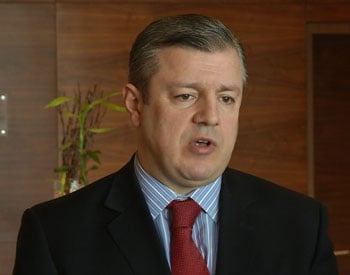On 25 August 2015, at the session of the Government of Georgia, the Minister of Economy and Sustainable Development of Georgia, Giorgi Kvirikashvili, said the following with regard to the depreciation of GEL: "In total, money transfers from Georgia decreased by USD 332 million. The remittances to Georgia dropped by USD 202 million. From privatisation, we have received USD 110 million. We have all the reasons to assume that everything that we have seen in the last couple of days with respect to GEL is solely the result of agiotage."
Factcheckverified the accuracy of Giorgi Kvirikashvili’s statement.
The GEL exchange rate is affected by the incoming and outgoing influx of USD, the amount of GEL in circulation and the level of demand for GEL. Besides the economic processes (the need for USD or GEL), the expectation of the population also determines which currency will be more in demand. If the population expects the depreciation of GEL, they will purchase USD and in this manner further encourage the depreciation of GEL. This practise is referred to as agiotage when there is no immediate danger of a significant depreciation of a currency due to economic processes but the currency continues to rapidly depreciate because of a high demand on foreign currency owing to pessimistic expectations.
The amount of incoming and outgoing USD is reflected in a country’s current account balance. At the present moment, only the data of the first quarter of 2015 are available which indicate that the amount of USD having entered Georgia from January to March 2015 was USD 185 million less than the amount of USD which left Georgia.
The current account balance of the first two quarters will be published at the end of September whilst the results of the three quarters will be published in September. Therefore, it is impossible to thoroughly calculate the amount of incoming and outgoing USD in the period of January-August. However, the data with regard to two very important money sources; namely, foreign trade and remittances, are published upon a monthly basis and are available, including July’s data.
Georgia’s current account balance is usually negative. After the decrease in exports since August 2014, the situation has become even worse. It has already been a year since the Georgian economy started to decrease. Since August 2014, including July 2015, the volume of exports has decreased by USD 636 million. Imports started to drop from January 2015 and decreased by USD 511 million. If we take only the first seven months for comparison, the volume of export decreased by USD 397 million whilst imports dropped by USD 511 million. In total, the current account balance for the first seven months of 2015 improved by GEL 114 million and equalled USD 3,036 million. In his statement about the USD 332 million less being sent abroad, the Minister of Economy and Sustainable Development probably means the improvement of the current account balance, including August, which is approximately USD 200 million.
Graph 1:
Difference of Export and Import in 2015 as Compared to the Same Period of 2014 (USD million)
 Source: National Statistics Office of Georgia
Source: National Statistics Office of Georgia
The amount of remittances started to decline from October 2014 and dropped by USD 270 million in total, including July 2015 (10 months). Of this, a USD 202 million decrease was registered in the first seven months of 2015. Minister Kvirikashvili has named the number correctly.
In January-July, the total income from privatisation reached GEL 46 million which is approximately USD 20 million. At the end of February 2015, Mr Kvirikashvili stated that the government had a plan of specific measures which would have resulted in USD 250-300 million in the nearest future.
To see a bigger picture of the situation in the country with regard to the incoming and outgoing influxes of USD in addition to the current account balance and remittances indicators, we need to analyse the information on revenues gained from tourism together with investment and loan capital. Information on the investment and loan capital will be calculated and published in a few months. According to the data of the first quarter of 2015, foreign direct investments dropped by 43%. The number of tourists decreased by 0.1% in January-August whilst the number of visitors (a visitor is a citizen of a foreign country who spends less than 24 hours in Georgia) increased by 10%. The amount of revenue from tourism is still unknown. In the first quarter of 2014 there was USD 10 million less in revenues as compared to the first quarter of 2014.
In regard to the amount of GEL in circulation, reserve money (with the exception of foreign currency) increased by 8.8% in July this year as compared to July 2014 and decreased by 8.2% as compared to December 2014. Reserve money is cash emitted by the National Bank of Georgia. If we look at the M2 monetary aggregate (total sum of cash and deposits outside the banks) of the national currency, it has increased by 7.3% as compared to the previous July and decreased by 3.4% as compared to December 2014. Naturally, it was possible to decrease the amount of GEL in circulation even further but, in this case, a recession in the Georgian economy was inevitable – at least for a certain period of time – and the artificial appreciation of GEL would not have resulted in a decrease in the negative current account balance.
The state budget also had an impact upon the GEL exchange rate in August. In the last month, GEL 90 million was spent from the budget balance to fund the state budget deficit. This means that budgetary expenditures have considerably increased the amount of GEL in circulation.
The GEL exchange rate was characterised by the trend of depreciation in August and it peaked (2.42) on 26 August 2015. GEL depreciated by 0.1 GEL in two days. Panic and agiotage do indeed also play a role in the case of such a rapid depreciation of a currency. However, to repeatedly bring agiotage as the reason behind the depreciation is wrong because it is a rational and natural reaction of the population. The reasons behind the depreciation are the ones which cause agiotage as well.
There was a positive expectation among the population that during the tourist season (July-August) the GEL exchange rate would have appreciated. However, that did not happen and positive expectations were replaced by negative ones. The expectations are forged by the statement and actions of politicians together with the economic processes themselves. The policy of confrontation with the National Bank of Georgia, the failure to fulfil the promise of slashing budget expenses and a practically unchanged process as concerns privatisation presumably have negatively affected expectations. This was further aggravated by the resumption of the depreciation trend of the currencies of Georgia’s neighbours which also has a negative impact on the GEL exchange rate.
At the present moment, the principal cause behind the fluctuation of the GEL exchange rate is the depleted influx of USD. The situation is worsened by the trend of depreciation of the currencies of our trade partner countries and by the negative expectation of the population when it comes to economic processes. Both business and consumer indices have fallen significantly in the last few months.
Conclusion The GEL exchange rate depreciated against USD by GEL 0.07 in August 2015. The exchange rate peaked (2.42) on August 26. Giorgi Kvirikashvili blamed the agiotage of the population as the reason behind the changes in the exchange rate. However, it must be noted that later, on 3 September 2015, on air on the talk show Politart
Mr Kvirikashvili named the current account balance; that is, the decrease in the influx of USD to Georgia, as one of the reasons behind the depreciation of GEL.
After an analysis of those factors impacting the GEL exchange rate, we have the following picture: export is still being decreased but it is balanced by the corresponding decrease in imports. Remittances have also decreased. In the first quarter of 2015, revenues from tourism decreased by 4% and investments dropped by 43%. Presumably, the situation has not been particularly positive following the first quarter as well. The state budget deficit was high in August. Its significant part was funded by the budget balance which in turn increased the amount of GEL in circulation. The promise of attracting USD 200-300 million did not materialise. The state budget expenses did not decrease. The existing confrontation with the National Bank of Georgia causes distrust toward financial institutions. Additionally, the level of trust of businessmen and consumers toward economic processes is very low. The national currencies of Georgia’s two largest neighbours, Russia and Turkey, have depreciated again. GEL showed a trend of depreciation even during the tourist season. All of these aforementioned factors have affected the expectation of the population about the prospects of the GEL exchange rate which was expressed in agiotage to a certain extent. However, in medium and long term perspectives, the GEL exchange rate is affected by the aforementioned fundamental factors.
FactCheck concludes that Giorgi Kvirikashvili’s statement is MOSTLY FALSE.








